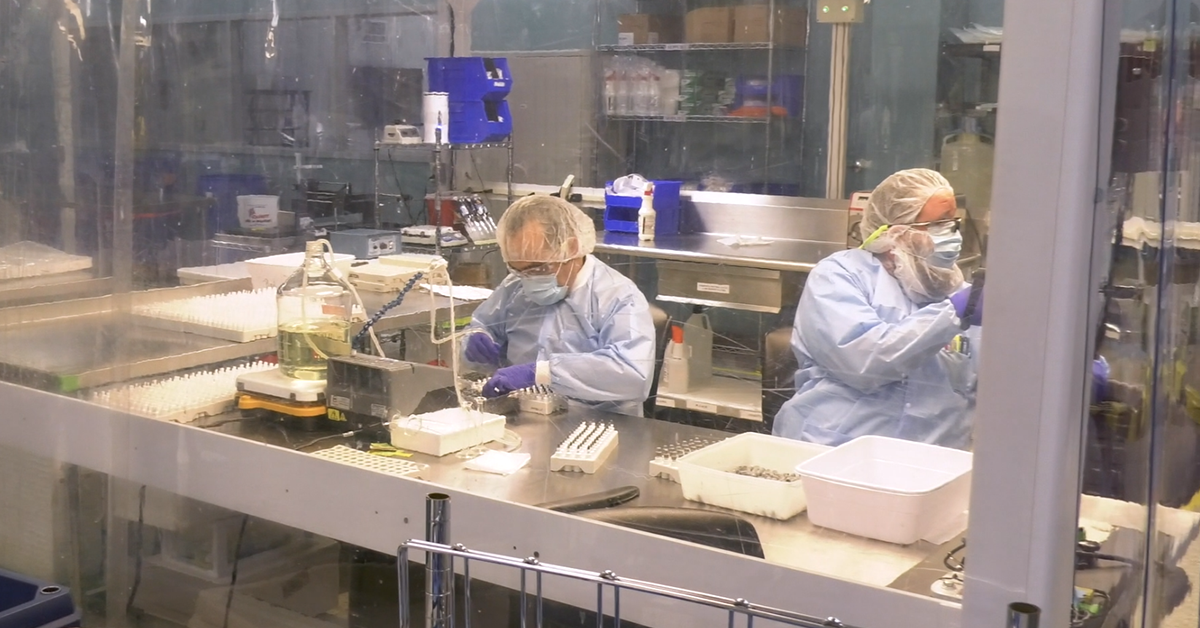
NEW RIVER VALLEY, VA – In late 2020, Onward New River Valley conducted a survey of manufacturing companies in Virginia’s New River Valley that revealed several insights into the region’s industry.
Survey responses were collected during a two-week period. The survey was sent to 35 manufacturers in Virginia’s New River Valley (NRV) with 48% responding.
The goal of the Industry Competitiveness Survey was to better understand how local manufacturing companies were operating and adapting in the wake of COVID-19. The survey was intended to identify common challenges among local companies and expose best practices that would support the overall competitiveness and continued growth of the local manufacturing industry.
Among the insights gained through the survey:
Overall, manufacturers in the NRV have persevered through the COVID-19 pandemic with varying impacts on their operations. The vast majority (76%) of respondents reported operating at or above pre-pandemic capacity, while 24% indicated operating at about half capacity. Roughly half of respondents indicated a decrease in their sales pipeline (43%) and overall revenue (52%).
Survey respondents seemed to signal that their supply chains had only been moderately impacted by the COVID-19 pandemic. Less than one-third of respondents reported increased costs for either inputs/raw materials (29%) or freight (27%). Almost half of respondents reported experiencing an increase in supplier lead times (48%) and a reduction in the availability of inputs/raw materials (43%).
However, these changes in the supply chain do not seem to be affecting production levels for NRV manufacturers. Two-thirds (66%) of respondents reported stable or increasing production levels.
Employment through manufacturing companies in the NRV has remained mostly stable during the pandemic. The majority (62%) of respondents said their number of employees remained the same or increased since the beginning of the pandemic. Of the 38% of respondents that reported a reduction in employees since the beginning of the pandemic, the majority (63%) anticipated rehiring eliminated positions within a year of the survey date.
Over half (62%) of respondents reported having unfilled job openings. The types of unfilled positions varied among respondents, but a need for both production workers and engineers was a consistent theme. There is clearly a continuing need for talent recruitment and retention efforts across the manufacturing industry in the NRV.
Over three-fourths of the survey respondents indicated that at least 90% of their employees were working on-site. With most employees in the NRV manufacturing industry working in person amid the pandemic, it is no surprise that a large majority (81%) of respondents reported that health and safety was one of their current top three concerns for their business. Manufacturers have devoted significant attention to implementing new public health policies and technologies to keep their employees safe and their operations running during the pandemic.
NRV manufacturers have increased the number of employees that are working remotely to help mitigate these health and safety concerns. Pre-pandemic, only one respondent reported having more than 5% of its employees working remotely, which increased to 62% of respondents by the time of the survey. This increase in remote work for some employees could be designed to offset the increased needs for physical space to comply with regulations and distancing requirements. One survey respondent stated that “physical distancing mandates are only feasible with a partial remote workforce.”
Manufacturing leaders signaled an overall positive outlook for the coming year. Almost three-fourths (71%) of respondents anticipated that the remaining duration of COVID-19 impacts on their business would resolve within one year from the survey date.
Respondents were asked to give their overall outlook on the status of their company over the next 6-12 months. The vast majority (90%) of respondents reported that they had a steady or positive outlook for their company during that time period.
Leaders were also asked to forecast how many employees they anticipated having within six months to one year. Almost two-thirds (62%) of respondents expected a modest or significant increase in employment levels within a year with no one anticipating a reduction in employees.


